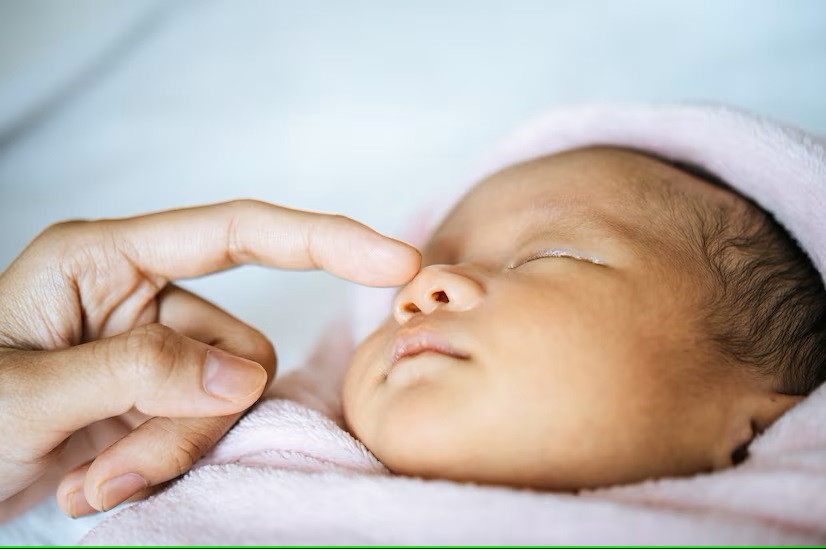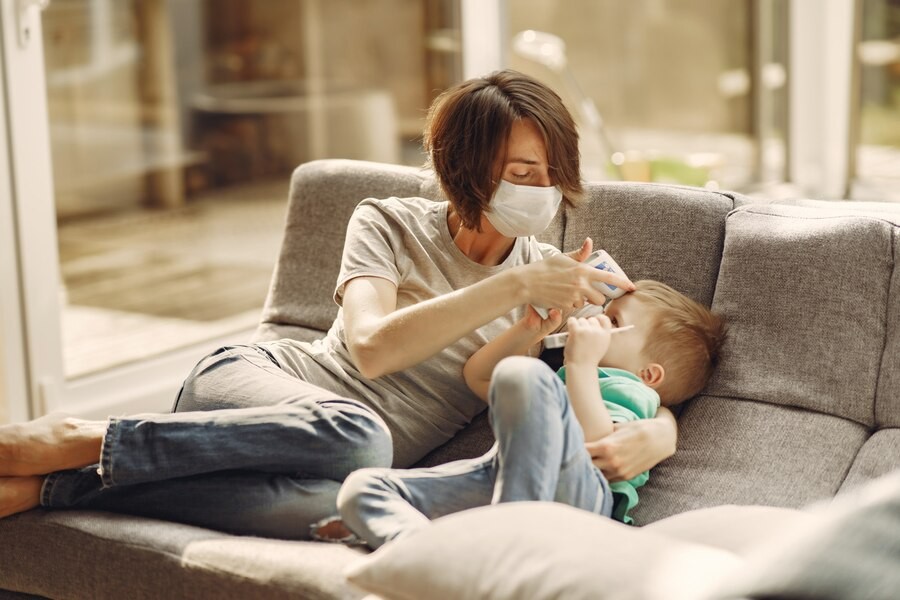Kejang demam umum dialami anak-anak di usia 6 bulan hingga 5 tahun. Saat anak mengalami kejang demam, semuanya bisa sangat menakutkan terutama bila Anda tidak tahu penyebab dan bagaimana pertolongan pertama yang bisa Anda lakukan.
Sebelum mengetahui cara menangani kejang demam pada anak, ketahui terlebih dahulu apa penyebab kejang demam.
Seperti Apakah Kejang Demam?
Suatu kondisi disebut sebagai kejang demam apabila anak mengalami kejang akibat demam, dan kejang hanya terjadi bila anak mengalami peningkatan suhu tubuh. Anak bisa mengalami hentakan berulang pada tungkai dan lengan yang disertai dengan mata mendelik ke atas atau bahkan kehilangan kesadaran.
Kejang demam terjadi ketika anak demam dengan suhu di atas 38 derajat celsius. Kejang bisa berlangsung selama beberapa detik hingga beberapa menit. Bila kejang terjadi selama lebih dari 15 menit dan berulang lebih dari satu kali dalam waktu 24 jam, segera cari pertolongan medis.
Baca Juga: Cara Mengatasi Demam pada Bayi Setelah Vaksinasi
Penyebab Kejang Demam
Demam tinggi pada anak yang berusia 6 bulan sampai 5 tahun bisa menyebabkan anak mengalami kejang. Kejang demam paling sering terjadi pada hari pertama sakitnya anak seiring peningkatan suhu tubuhnya.
Infeksi virus juga bisa menyebabkan demam pada anak dan memicu terjadinya kejang demam. Contoh dari infeksi virusnya adalah:
- Cacar
- Covid-19
- Infeksi telinga
- Influenza
- Malaria
- Meningitis
- Gastroenteritis
- ISPA
- Tonsilitis
Beberapa imunisasi juga bisa menyebabkan reaksi KIPI seperti demam. Pada beberapa anak, bila mereka mengalami demam dengan suhu tinggi, demam tersebut bisa memicu kejang demam. Namun perlu dicatat bahwa bukan vaksin yang menyebabkan kejang demam, namun demam itu sendiri. Anak mungkin mengalami kejang demam ketika pernah memiliki riwayat kejang demam sebelumnya.
Baca Juga: Ada 5 Jenis Demam, Apa Perbedaannya?
Apa yang Harus Dilakukan saat Anak Kejang Demam?
Kejang demam menjadi momok yang menakutkan bagi setiap orang tua. Tetapi Anda tidak perlu panik dan terlalu khawatir. Berikut adalah panduan yang bisa dilakukan jika anak mengalami kejang demam di rumah:
- Tetap tenang dan jangan panik saat melihat anak demam, perhatikan bagaimana kejang yang terjadi pada anak seperti tampilan gejalanya, durasi kejang yang terjadi dan apakah kejang berulang
- Apabila kejang bertahan selama 5 menit atau lebih dan tidak menunjukkan tanda-tanda berhenti maka segera dapatkan pertolongan medis darurat
- Ketika melihat anak demam, segera persiapkan diri untuk membawa anak ke rumah sakit terdekat untuk mendapatkan pemeriksaan lebih lanjut
- Jangan meletakkan anak di atas meja atau ranjang karena risiko jatuh yang mungkin dialami, sebaiknya baringkan anak di lantai atau gendong di lengan untuk menurunkan risiko cedera
- Baringkan anak di sisi kiri tubuh dengan menempatkan lengan bawah sebagai bantal, langkah ini dapat membantu mencegah tersedak cairan dan masuknya cairan ke saluran napas
- Jangan memasukkan benda apapun ke dalam mulut yang justru dapat menambah cedera pada anak
- Jangan merendam anak ke dalam bak mandi untuk menurunkan suhu tubuhnya
Kejang demam pada anak tidak bisa dicegah dan diprediksi kapan terjadi. Anda perlu memeriksakan anak ke dokter saat kejang demam pertama kali terjadi atau ketika kejang demam terjadi berulang.
Anda mungkin perlu menyiapkan obat penurun demam bila anak mengalami demam. Tetapi perlu diingat bahwa obat penurun demam juga tidak dapat mencegah kejang demam terjadi. Konsultasikan dengan dokter terkait dosis obat penurun demam sesuai dengan usia dan kebutuhan anak melalui aplikasi Ai Care yang bisa diunduh di ponsel Anda.
Mau tahu informasi seputar kehamilan, menyusui, kesehatan wanita dan anak-anak? Cek di sini, ya!
- dr Hanifa Rahma
Cleveland Clinic (2022). Febrile Seizures. Available from: https://my.clevelandclinic.org/health/symptoms/7001-febrile-seizures
NHS UK (2019). Febrile seizures. Available from: https://www.nhs.uk/conditions/febrile-seizures
Mayo Clinic (2023). Febrile seizure. Available from: https://www.mayoclinic.org/diseases-conditions/febrile-seizure/symptoms-causes/syc-20372522
The Royal Children's Hospital Melbourne (2019). Febrile seizures. Available from: https://www.rch.org.au/kidsinfo/fact_sheets/febrile_convulsions/












